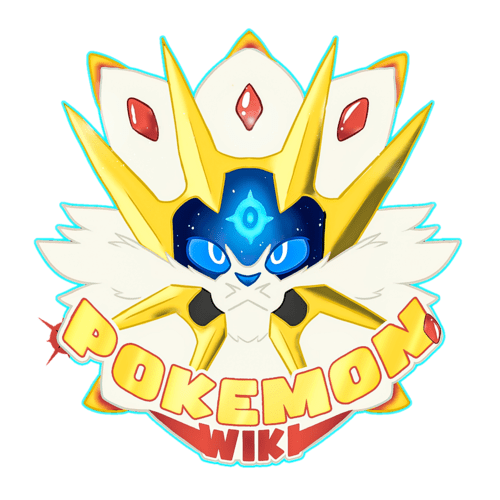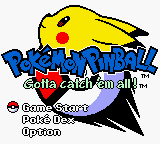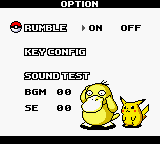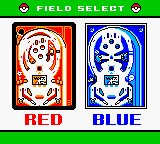(Pokémon pinball) |
mNo edit summary Tag: rte-source |
||
| (26 intermediate revisions by 15 users not shown) | |||
| Line 1: | Line 1: | ||
| + | {{Infobox Game |
||
| − | [[File:Images (2).jpg|right]]'''''Pokémon Pinball''''' (ポケモンピンボール''Pokemon Pinbōru''<sup style="line-height: 1em; ">[http://en.wikipedia.org/wiki/Help:Installing_Japanese_character_sets ?]</sup>) is a [http://en.wikipedia.org/wiki/Pinball pinball] game based on [http://en.wikipedia.org/wiki/Pok%C3%A9mon_Red_and_Blue ''Pokémon Red'' and ''Blue'']. In it, the ball is a [http://en.wikipedia.org/wiki/Pok%C3%A9_Ball Poké Ball], and most of the objects on the table are [http://en.wikipedia.org/wiki/Pok%C3%A9mon Pokémon]-related. |
||
| + | | background color = f8e038 |
||
| − | {| class="toc" id="toc" style="font-size: 12px; color: black; background-color: rgb(249, 249, 249); border-top-width: 1px; border-right-width: 1px; border-bottom-width: 1px; border-left-width: 1px; border-top-style: solid; border-right-style: solid; border-bottom-style: solid; border-left-style: solid; border-top-color: rgb(170, 170, 170); border-right-color: rgb(170, 170, 170); border-bottom-color: rgb(170, 170, 170); border-left-color: rgb(170, 170, 170); padding-top: 5px; padding-right: 5px; padding-bottom: 5px; padding-left: 5px; " |
||
| + | | border color = 008eda |
||
| − | |[http://en.wikipedia.org/wiki/Pok%C3%A9mon_Pinball#Objectives ves]*[http://en.wikipedia.org/wiki/Pok%C3%A9mon_Pinball#Gameplay 2 Gameplay]**[http://en.wikipedia.org/wiki/Pok%C3%A9mon_Pinball#Tables 2.1 Tables]*[http://en.wikipedia.org/wiki/Pok%C3%A9mon_Pinball#Reception 3 Reception]*[http://en.wikipedia.org/wiki/Pok%C3%A9mon_Pinball#Sequel 4 Sequel] |
||
| + | | background color 2 = e6e5ed |
||
| − | *[http://en.wikipedia.org/wiki/Pok%C3%A9mon_Pinball#References 5 References] |
||
| + | | border color 2 = e71e30 |
||
| − | *[http://en.wikipedia.org/wiki/Pok%C3%A9mon_Pinball#External_links 6 External links] |
||
| + | | video game title = Pokémon Pinball |
||
| ⚫ | |||
| + | | japanese title = {{tt|ポケモンピンボール|Pokemon Pinbōru}} |
||
| − | ==Objectives== |
||
| + | | image = Pokémon Pinball Boxart.jpg |
||
| ⚫ | |||
| + | | caption = Pokémon Pinball box art cover |
||
| + | | generation = [[Generation I]] |
||
| + | | players = 1 player |
||
| + | | platform = Game Boy |
||
| + | | category = Pinball |
||
| + | | developer = [[Jupiter Corporation]] |
||
| + | | publisher = Nintendo |
||
| + | | japanese release date = April 14, 1999 |
||
| + | | north america release date = June 28, 1999 |
||
| + | | european release date = October 6, 2000 |
||
| + | | south korean release date = N/A |
||
| + | | australian release date = July 13, 1999 |
||
| + | | cero = A |
||
| + | | esrb = E |
||
| + | | acb = N/A |
||
| + | | oflc = G8+ |
||
| + | | pegi = 3+ |
||
| + | | grb = N/ |
||
| + | | japanese image = Pokémon Pinball Japanese Cover.PNG |
||
| + | | japanese caption = Pokémon Pinball Japanese box cover art. |
||
| ⚫ | |||
| ⚫ | {{nihongo|Pokémon Pinball|ポケモンピンボール|Pokemon Pinbōru}} is a pinball game based on ''[[Pokémon Red and Blue]]''. In it, the pinball is a [[Poké Ball]], and most of the objects on the table are [[Pokémon|Pokémon]]-related. Like in any basic Pinball game, the main objective is to get points, using the different modes of advances to score them at a higher rate. ''Pokémon Pinball'' has a secondary objective hinted at by the tagline "Gotta Catch 'em All," which is to collect all 151 Pokémon to fill your [[Pokédex]]. The Pokédex is saved between individual games, so it can be built up over time. |
||
| + | |||
| + | ==Overview== |
||
===Tables=== |
===Tables=== |
||
| ⚫ | There are two tables in the game, red and blue. Each table has its own details and gameplay elements. Each table has different "locations" that you play, which determine which Pokémon are available for capture. A subset of available locations are displayed slot-machine style in the beginning of a game, and pressing A will select your starting location and launch the first ball into play. After that, each table has its own mechanism for advancing to the next location, including the locations not available at the start of the game. |
||
| − | There are two tables in the game, red and blue. Each table has its own details and gameplay elements. |
||
| + | |||
| ⚫ | "Catch Mode," when activated, starts a 2 minute window of opportunity where you can attempt to capture a Pokémon. Once you activate "catch mode," you must hit the pop bumpers 6 times. Each hit unlocks 1/6 of an image of the Pokémon currently up for capture. Once the image is complete, the Pokémon appears on the table, where it must be hit 4 times with the ball to capture it. |
||
| + | |||
| ⚫ | "Evolution Mode," when activated, starts a 2 minute window of opportunity where you select a captured Pokémon (from the current game in progress only) and attempt to evolve it into another form. This is the only way to add the evolved form to your Pokédex. Once you select a Pokémon, you must hit targets on the playfield. There are up to 6 targets, but only 3 of them have items in them you need to evolve a Pokémon. The others create a time-wasting sequence before you can hit targets again. If you hit a target with an item, the item appears on the playfield and must be collected with the ball. Once you've collected 3 items, the hole in the center of the board opens up. Sinking the ball in the hole successfully evolves the Pokémon. |
||
| + | |||
| ⚫ | |||
| ⚫ | ''Pokémon Pinball'' received positive reviews and was rated an 8/10 by ''Electronic Gaming Monthly''. GameSpot praised it as "more than a shameless cash-in on the Pokémon phenomenon", giving it a score of 8.7 and citing its use of the Game Boy Color's display and presentation. However, they also criticized the game, lamenting the lack of other pinball-related elements and the game's poor physics. They additionally criticized the built-in rumble feature, calling it "a waste [...] of a AAA battery" and a "nice novelty" that became increasingly annoying as one played the game. |
||
| ⚫ | |||
| ⚫ | |||
| ⚫ | ''[[Pokémon Pinball: Ruby & Sapphire]]'' is the third-generation sequel to ''Pokémon Pinball''. The main difference is the available Pokémon. Instead of capturing the first-generation Pokémon, players capture the Pokémon available in Pokémon Ruby and Sapphire. It received positive reviews with IGN giving it a score of 8.8, naming it "one of the best video pinball games on the GBA".[2] |
||
| ⚫ | |||
| + | ==Gallery== |
||
| ⚫ | |||
| + | <gallery> |
||
| + | PP 1.png|Title screen |
||
| + | PP 2.png|Options menu (starring the new Rumble function) |
||
| + | PP 3.png|Choosing the play board |
||
| + | </gallery> |
||
| + | {{Spinoff}} |
||
| ⚫ | |||
| ⚫ | |||
| ⚫ | |||
| ⚫ | |||
| ⚫ | |||
| ⚫ | |||
| − | #'''[http://en.wikipedia.org/wiki/Pok%C3%A9mon_Pinball#cite_ref-0 ^]''' Davis, Cameron (2000-01-28). [http://www.gamespot.com/gbc/puzzle/pokemonpinball/review.html "Pokemon Pinball Review"]. [http://en.wikipedia.org/wiki/GameSpot GameSpot]. Retrieved 2010-05-21. |
||
| − | #'''[http://en.wikipedia.org/wiki/Pok%C3%A9mon_Pinball#cite_ref-1 ^]''' Craig Harris (August 21, 2003). [http://gameboy.ign.com/articles/434/434815p1.html "Pokemon Pinball: Ruby & Sapphire - Game Boy Advance Review at IGN"]. [http://en.wikipedia.org/wiki/IGN IGN]. Retrieved 2010-05-28. |
||
Revision as of 20:52, 5 April 2016
Template:Infobox Game Pokémon Pinball (Japanese: ポケモンピンボール, Hepburn: Pokemon Pinbōru) is a pinball game based on Pokémon Red and Blue. In it, the pinball is a Poké Ball, and most of the objects on the table are Pokémon-related. Like in any basic Pinball game, the main objective is to get points, using the different modes of advances to score them at a higher rate. Pokémon Pinball has a secondary objective hinted at by the tagline "Gotta Catch 'em All," which is to collect all 151 Pokémon to fill your Pokédex. The Pokédex is saved between individual games, so it can be built up over time.
Overview
Tables
There are two tables in the game, red and blue. Each table has its own details and gameplay elements. Each table has different "locations" that you play, which determine which Pokémon are available for capture. A subset of available locations are displayed slot-machine style in the beginning of a game, and pressing A will select your starting location and launch the first ball into play. After that, each table has its own mechanism for advancing to the next location, including the locations not available at the start of the game.
"Catch Mode," when activated, starts a 2 minute window of opportunity where you can attempt to capture a Pokémon. Once you activate "catch mode," you must hit the pop bumpers 6 times. Each hit unlocks 1/6 of an image of the Pokémon currently up for capture. Once the image is complete, the Pokémon appears on the table, where it must be hit 4 times with the ball to capture it.
"Evolution Mode," when activated, starts a 2 minute window of opportunity where you select a captured Pokémon (from the current game in progress only) and attempt to evolve it into another form. This is the only way to add the evolved form to your Pokédex. Once you select a Pokémon, you must hit targets on the playfield. There are up to 6 targets, but only 3 of them have items in them you need to evolve a Pokémon. The others create a time-wasting sequence before you can hit targets again. If you hit a target with an item, the item appears on the playfield and must be collected with the ball. Once you've collected 3 items, the hole in the center of the board opens up. Sinking the ball in the hole successfully evolves the Pokémon.
Reception
Pokémon Pinball received positive reviews and was rated an 8/10 by Electronic Gaming Monthly. GameSpot praised it as "more than a shameless cash-in on the Pokémon phenomenon", giving it a score of 8.7 and citing its use of the Game Boy Color's display and presentation. However, they also criticized the game, lamenting the lack of other pinball-related elements and the game's poor physics. They additionally criticized the built-in rumble feature, calling it "a waste [...] of a AAA battery" and a "nice novelty" that became increasingly annoying as one played the game.
Sequel
Pokémon Pinball: Ruby & Sapphire is the third-generation sequel to Pokémon Pinball. The main difference is the available Pokémon. Instead of capturing the first-generation Pokémon, players capture the Pokémon available in Pokémon Ruby and Sapphire. It received positive reviews with IGN giving it a score of 8.8, naming it "one of the best video pinball games on the GBA".[2] References
Gallery
Template:Spinoff



